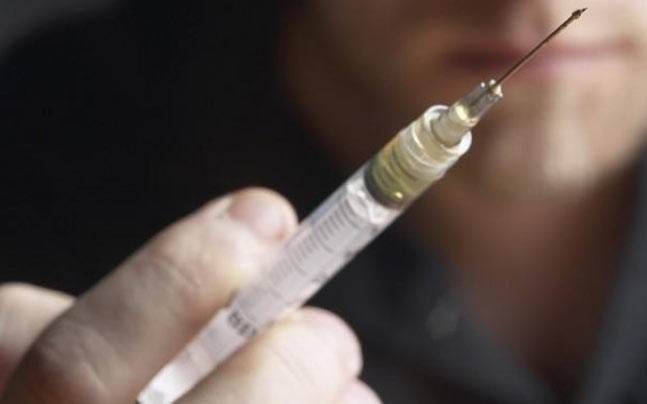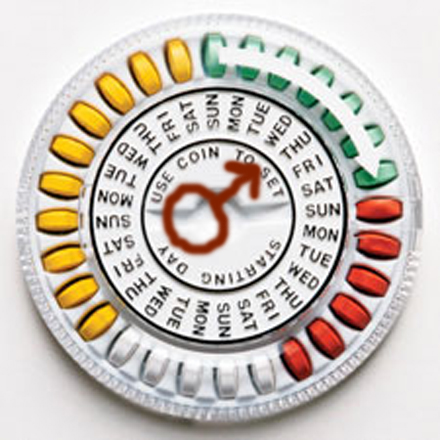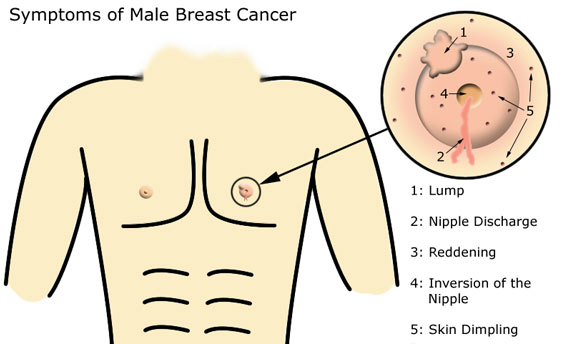
Jay and Kelli Leiner were high school sweethearts, got married right after college and decided to start a family at age 26.
“I was one of those little girls who had a baby doll clutched in her hands from the beginning. I’ve always known that I wanted to be a mother,” Kelli Leiner said. But both are now 31 and they’ve found the journey to parenthood to be long and painful.
“By the time we were 28 and we had no baby yet — we never got pregnant and the friends that we had were already onto their second child — we were wondering: What’s wrong with us?” Jay Leiner said. What they discovered surprised them: She didn’t have a fertility problem. He did.
Infertility, which affects an estimated 15 percent of all couples in the United States, generally is seen as a woman’s problem. However, men now are known to be partly responsible for almost 60 percent of all couples’ infertility cases in this country, according to research by Weill Medical College of Cornell University.
At first, Kelli Leiner automatically assumed it was she who had problems conceiving. She immediately went to her gynecologist and asked for testing. But all her tests came back normal. “I didn’t have any issues with infertility. So we tested Jay. The doctors did a semen analysis,” Kelli Leiner said. “Tests showed his sperm count was about five million.”
“I’m like: That’s a lot, five million. I wish I had $5 million,” Jay Leiner said. “But when the doctor told us it needs to be more in the 100 million range, I was shocked. “And on top of the low count,” he added, “motility was also low, which means the sperm are not going anywhere, they were lazy sperm.”
Male Infertility Carries Social Stigma
Dr. Mary Hinckley, a reproductive endocrinologist, said men generally are hesitant to take fertility tests because there’s such a stigma associated with male infertility.
“They’re supposed to be macho men. They’re not supposed to have low sperm counts,” said Hinckley. Jay Leiner is one of the 9 percent of men diagnosed with male-factor infertility. Doctors now recommend that both men and women should be evaluated at the same time when they’re having trouble getting pregnant.
“It made me feel pretty bad about myself: Why can’t I do something normal that the rest of the population can?” Jay Leiner said. Various tests returned inconclusive, leading his doctor to determine he simply was born with a low sperm count and motility.
Causes and Treatments of Male Infertility
Besides genetic causes, Dr. Karen Boyle, regional director of male infertility at Shady Grove Reproductive Science Center said there are underlying medical conditions that account for male infertility. They include hormone abnormalities, varicoceles (varicose veins in the scrotum), obesity, drug use and exposure to radiation and chemotherapy. Treatment options may include surgery, hormone therapy and assisted reproductive technologies. Even though their case was was classified as “severe,” Kelli Leiner still could get pregnant through medical intervention.
After five IUIs, or intra-uterine insemination attempts, that failed over the past three years, the couple finally succeeded after undergoing one in vitro fertilization process last year. Their doctor used a special procedure called ICSI, or introcytoplasmic sperm injection.
We actually would take Jay’s sperm, find the very best-looking one and put it into each of Kelli’s eggs so that we could take a single sperm, put it in a single egg, to help with fertilization. Ultimately, that’s what made the difference for them,” Hinckley said.
The couple’s first baby boy, Gavin, was born shortly before Thanksgiving 2009. “It was the best moment of my life,” said Kelli Leiner. “It really was. It was surreal. It was so magical.” A Guide For Men Who Want to Boost Fertility
Dr. Karen Boyle, regional director of male infertility at Shady Grove Reproductive Science Center, gives some advice on how to boost male fertility.
The Dos
Be healthy. Eat right and exercise. Men with a body mass index of over 25 have a 20 percent higher chance of infertility, and obese men are three times more likely to have lower sperm counts.
Take your vitamins. Eat foods rich in antioxidants such as vitamins A, C, and E. These vitamins are crucial as they repair sperm DNA. Also zinc, folic acid, selenium and amino acid are good for sperm health.
Try intercourse every other day while trying to conceive. More isn’t better. In fact, having sex every day or multiple times a day will lower sperm counts significantly. To maximize fertility potential, every other day is ideal as it allows sperm counts to normalize.
The Don’ts
Don’t use testosterone or anabolic steroids. That shuts down the signal from the brain to stimulate sperm production and will make sperm counts significantly lower if not disappear altogether.
Don’t smoke or use recreational drugs. Smoking impairs sperm motility and morphology and worsens the quality of a man’s erections. Marijuana can cause DNA damage and lower sperm counts.
Stay out of hot tubs or Jacuzzis and don’t leave a laptop computer on your lap for long periods of time. Prolonged or repetitive heat exposure can adversely affect sperm production.
Source: abc news












